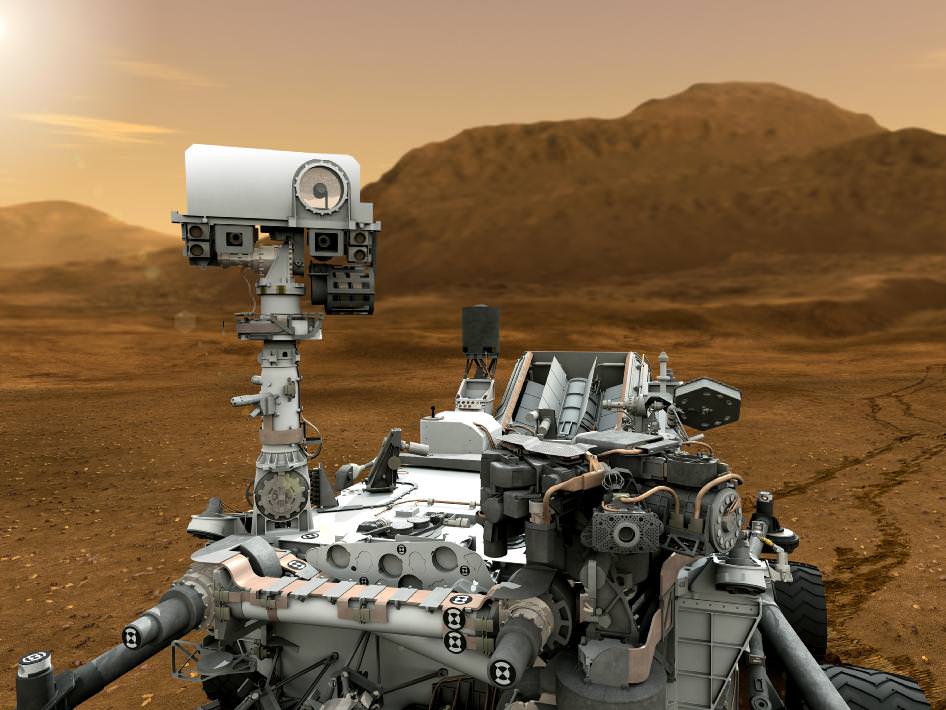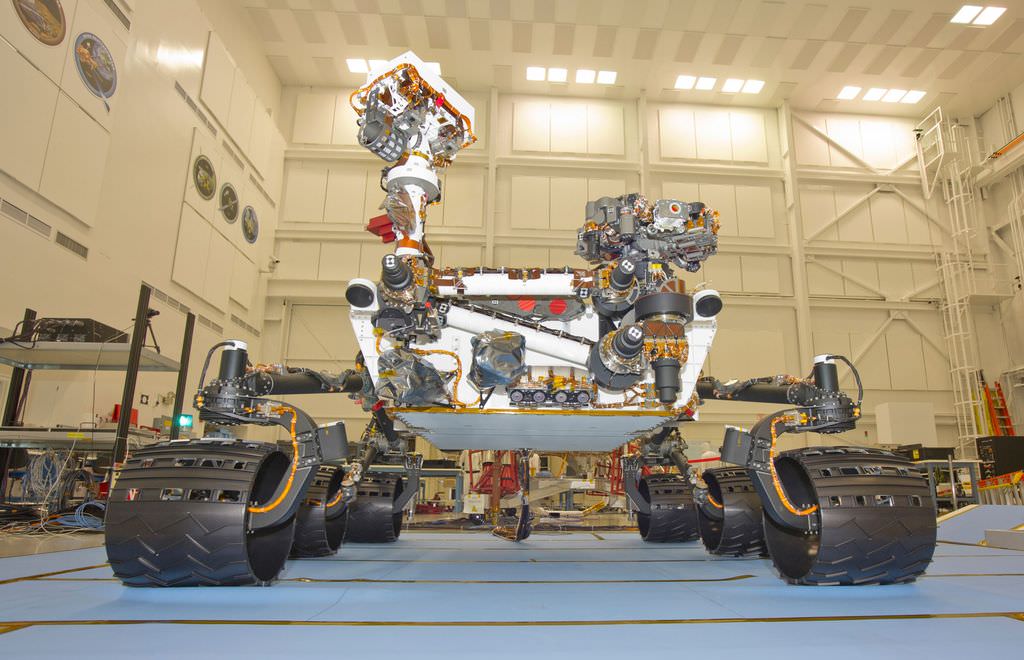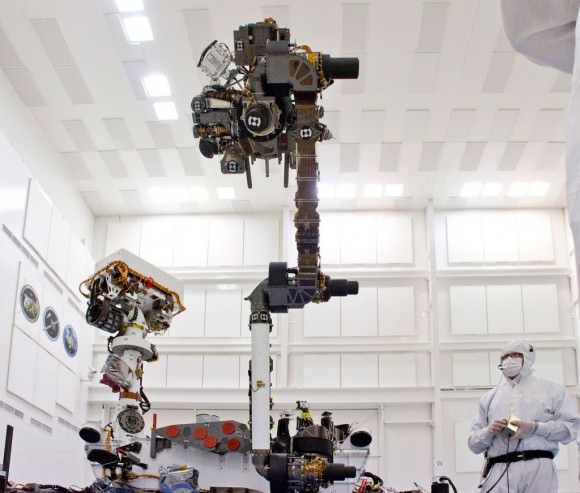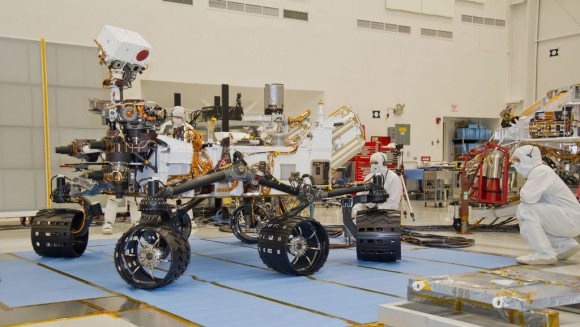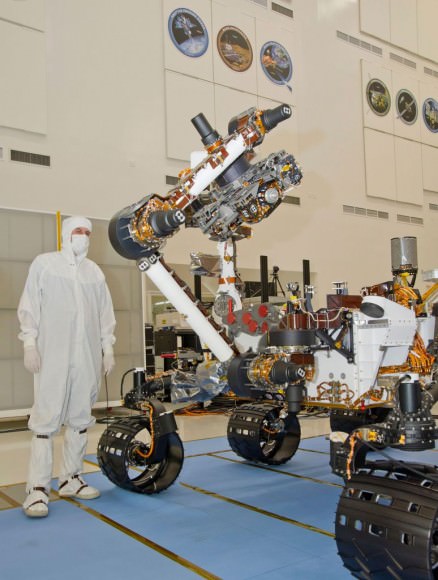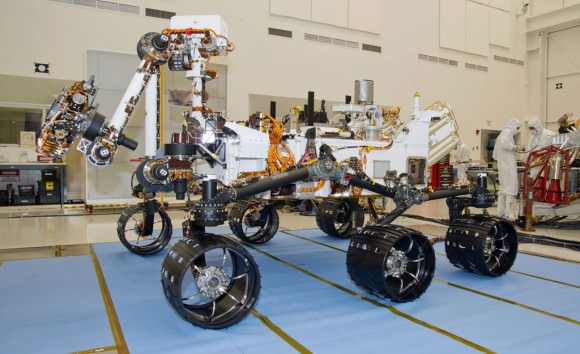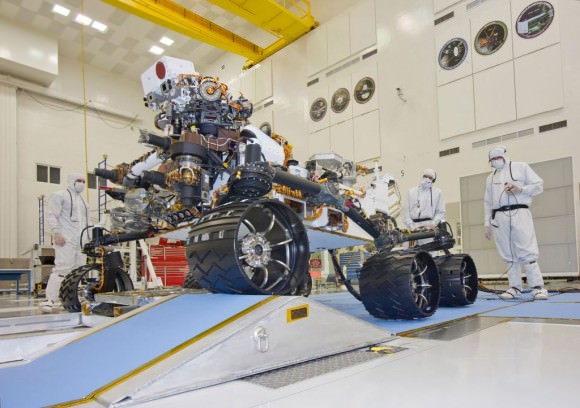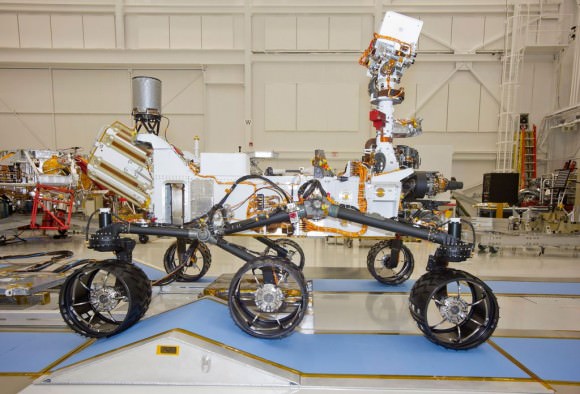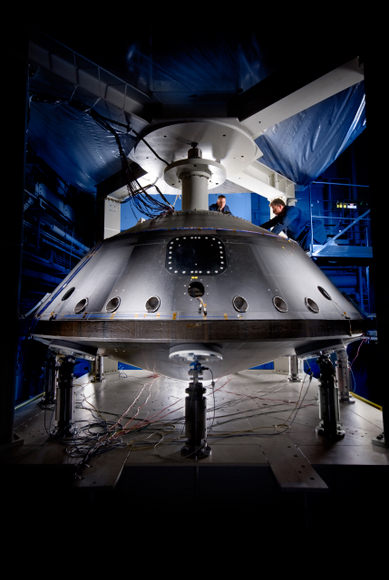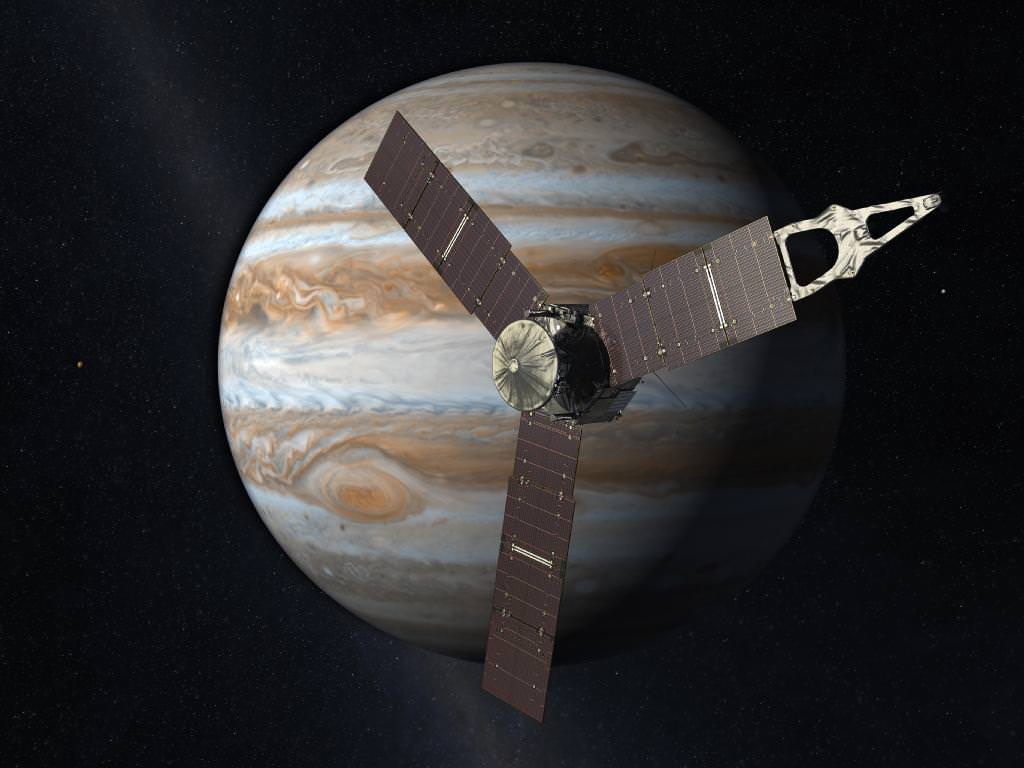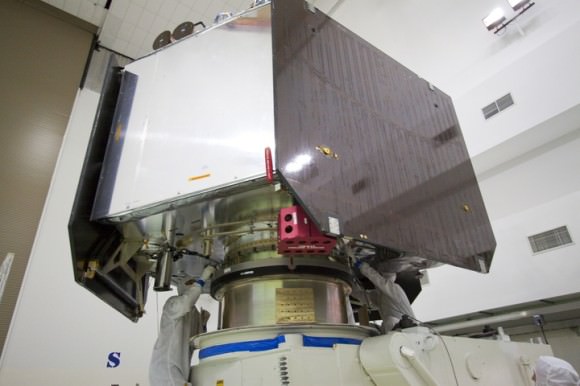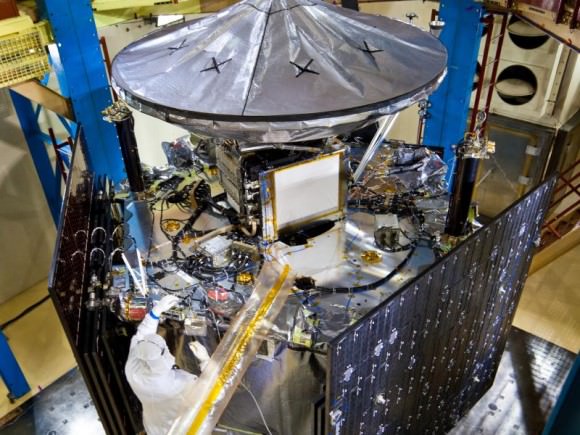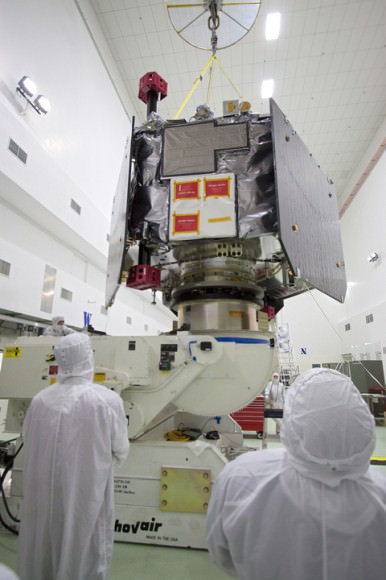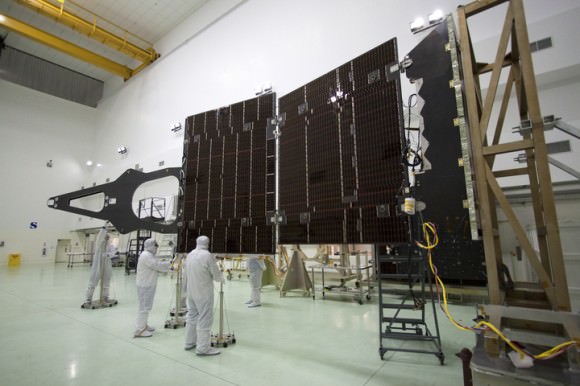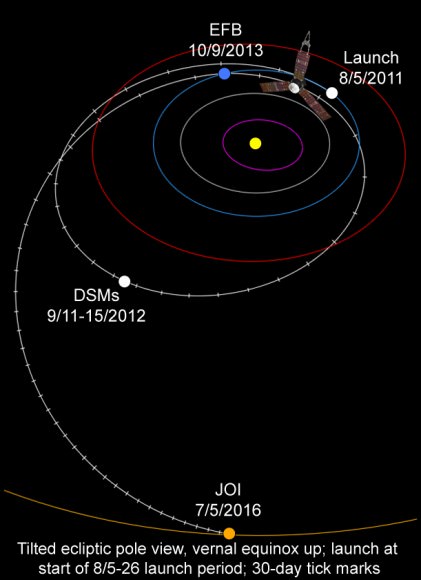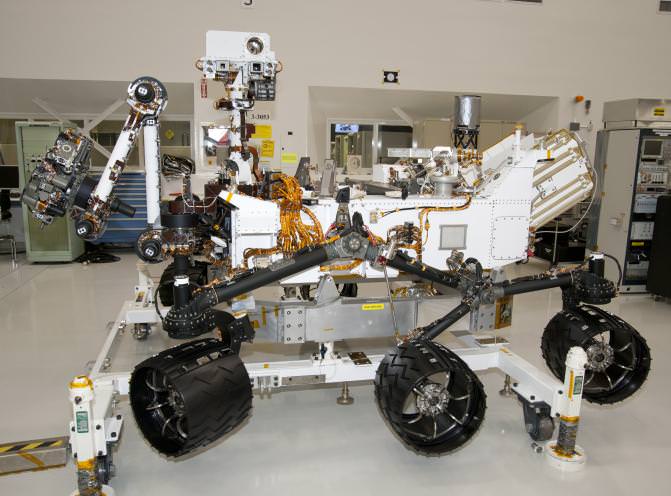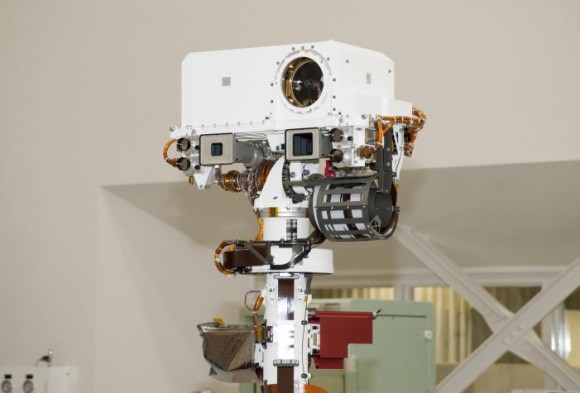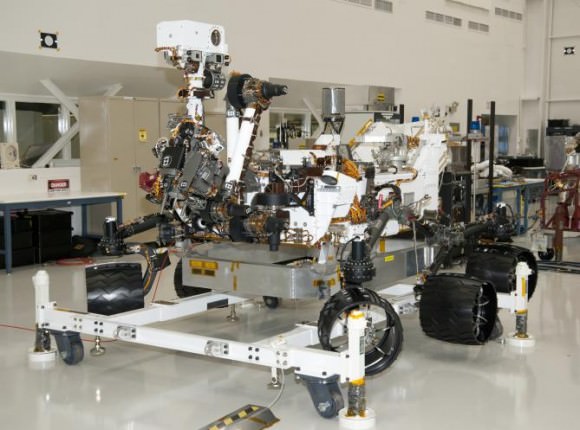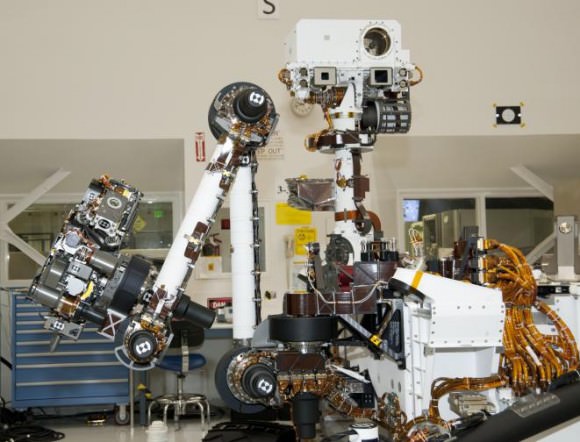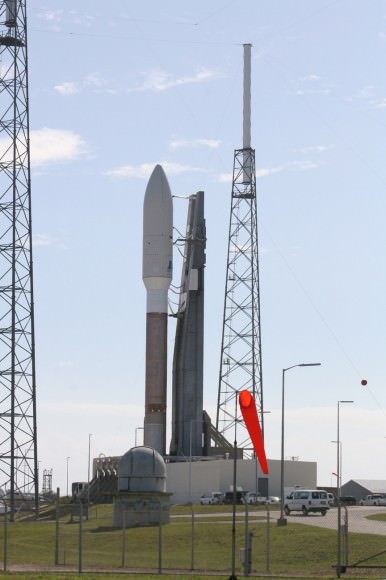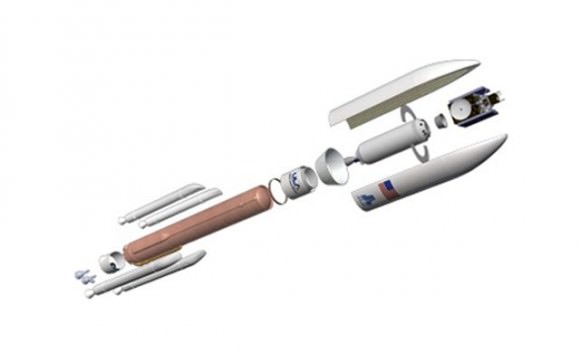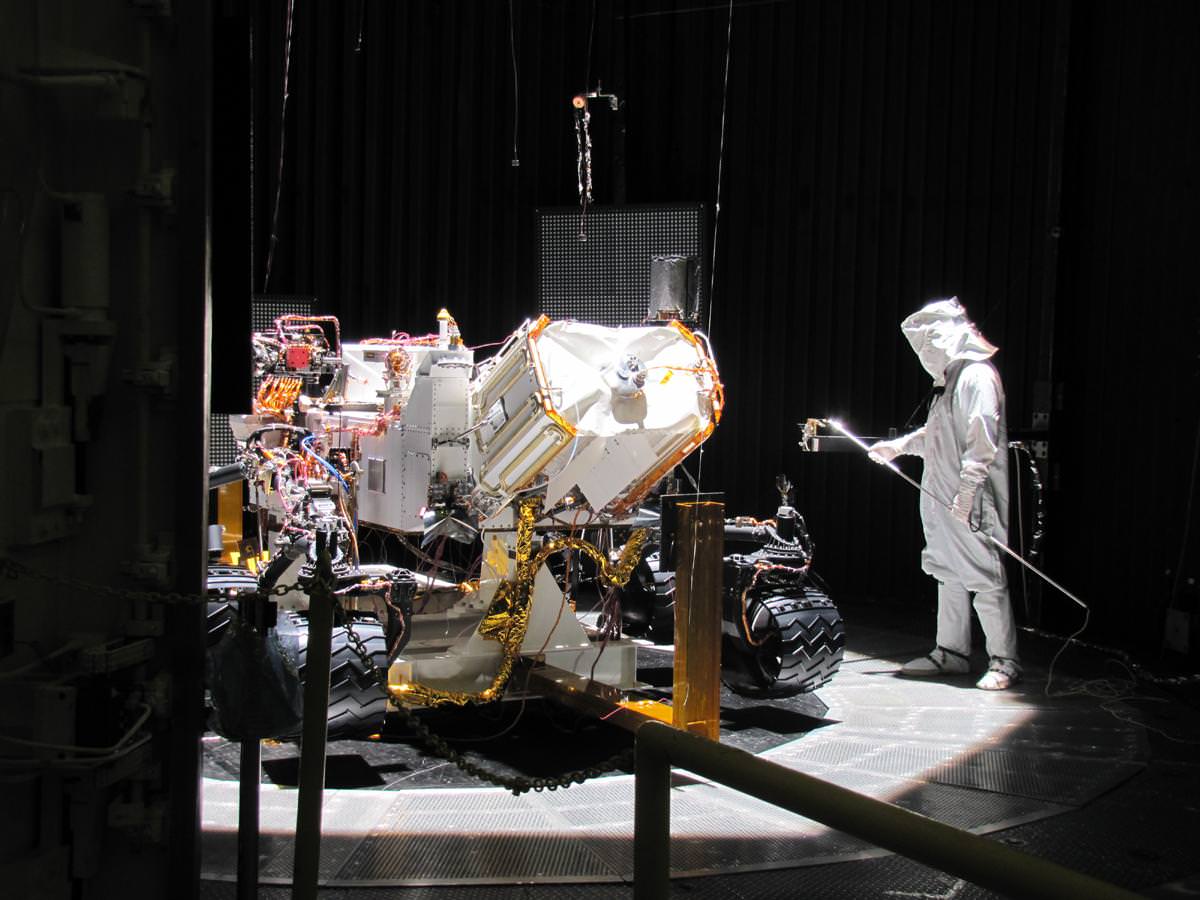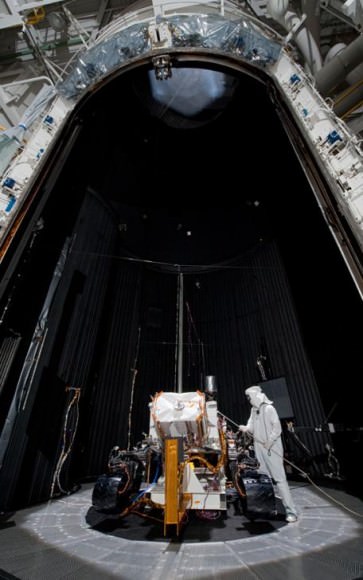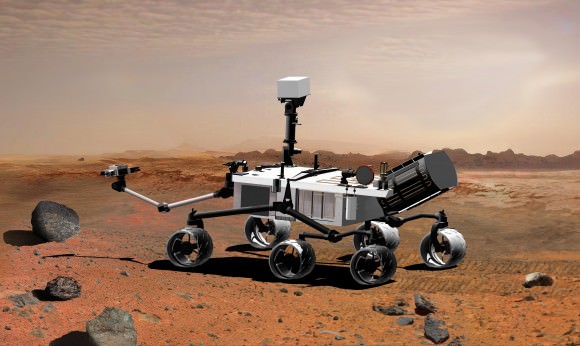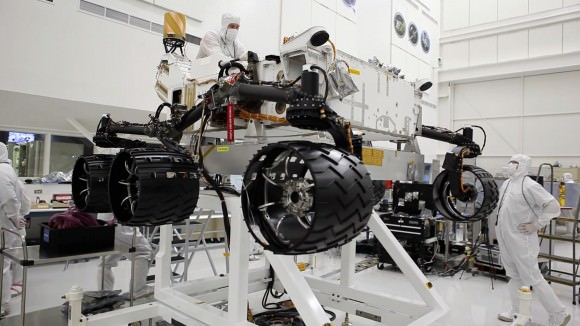[/caption]
NASA’s next Mars rover, the Curiosity Mars Science Laboratory, will soon embark on a quantum leap in humankind’s scientific exploration of the Martian surface -the most Earthlike planet in our Solar System.
To get a birds eye understanding of Curiosity’s magnificent capabilities, check out the dramatic new high resolution animation below which depicts NASA’s next Mars rover traversing tantalizing terrain for clues to whether Martian microbial life may have existed, evolved and been sustained in past or present times.
The new action packed animation is 11 minutes in length. It depicts sequences starting with Earth departure, smashing through the Martian atmosphere, the nail biting terror of the never before used rocket-backpack sky crane landing system and then progressing through the assorted science instrument capabilities that Curiosity will bring to bear during its minimum two year expedition across hitherto unseen and unexplored Martian landscapes, mountains and craters.
Curiosity is equipped with 10 science instruments. The three meter long robot is five times the weight of any previous Mars rover.
Those who closely follow the adventures of NASA’s Spirit and Opportunity rovers, like myself, will quickly recognize several of the panoramic scenes which have been included to give a realistic feeling of vistas to expect from the car sized Curiosity rover.
Here is a shorter 4 minute animation with expert narration
Along the way you’ll experience Curiosity zapping rocks with a laser, deftly maneuvering her robotic arm and camera mast and retrieving and analyzing Martian soil samples.
“It is a treat for the 2,000 or more people who have worked on the Mars Science Laboratory during the past eight years to watch these action scenes of the hardware the project has developed and assembled,” said Mars Science Laboratory Project Manager Pete Theisinger at NASA’s Jet Propulsion Laboratory, Pasadena, Calif, in a NASA statement. “The animation also provides an exciting view of this mission for any fan of adventure and exploration.”
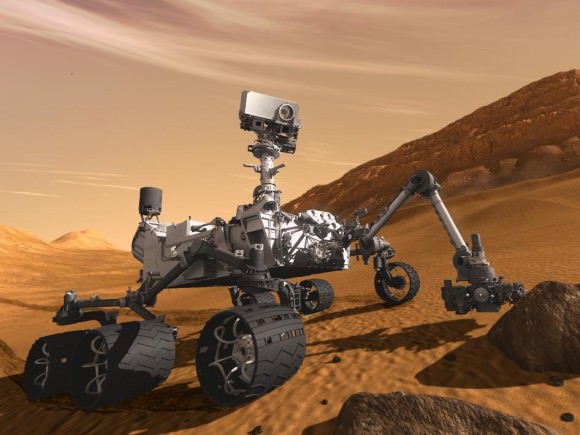
Curiosity rover examines a rock on Mars with a set of tools at the end of the rover's arm, which extends about 2 meters (7 feet). Two instruments on the arm can study rocks up close. Also, a drill can collect sample material from inside of rocks and a scoop can pick up samples of soil. The arm can sieve the samples and deliver fine powder to instruments inside the rover for thorough analysis. Credit: NASA/JPL-Caltech
Curiosity was flown this week from her birthplace at NASA’s Jet Propulsion Laboratory in California to her future launch site in Florida aboard a C-17 military cargo transport aircraft.
She arrived at the Shuttle Landing Facility (SLF) at the Kennedy Space Center on June 22. The SLF is the same landing strip where I watched the STS-135 crew arrive for NASA’s final shuttle mission just days earlier days for their final launch countdown training.
NASA has scheduled Curiosity to blast off for the red planet on Nov. 25, 2011 from Cape Canaveral Air Force Station aboard an Atlas V rocket. Curiosity will touchdown in August 2012 at a landing site that will be announced soon by Ed Weiler, NASA Associate Administrator for the Science Mission Directorate in Washington, D.C.
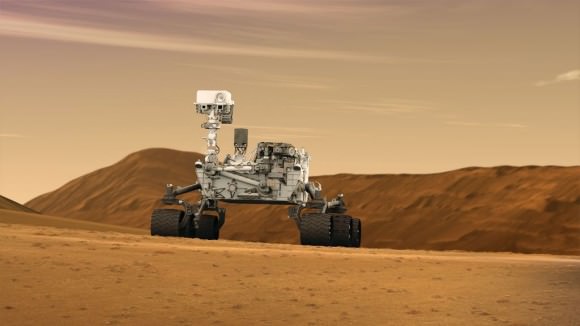
Read my prior features about Curiosity
Packing a Mars Rover for the Trip to Florida; Time Lapse Video
Test Roving NASA’s Curiosity on Earth
Curiosity Mars Rover Almost Complete
Curiosity Rover Testing in Harsh Mars-like Environment

